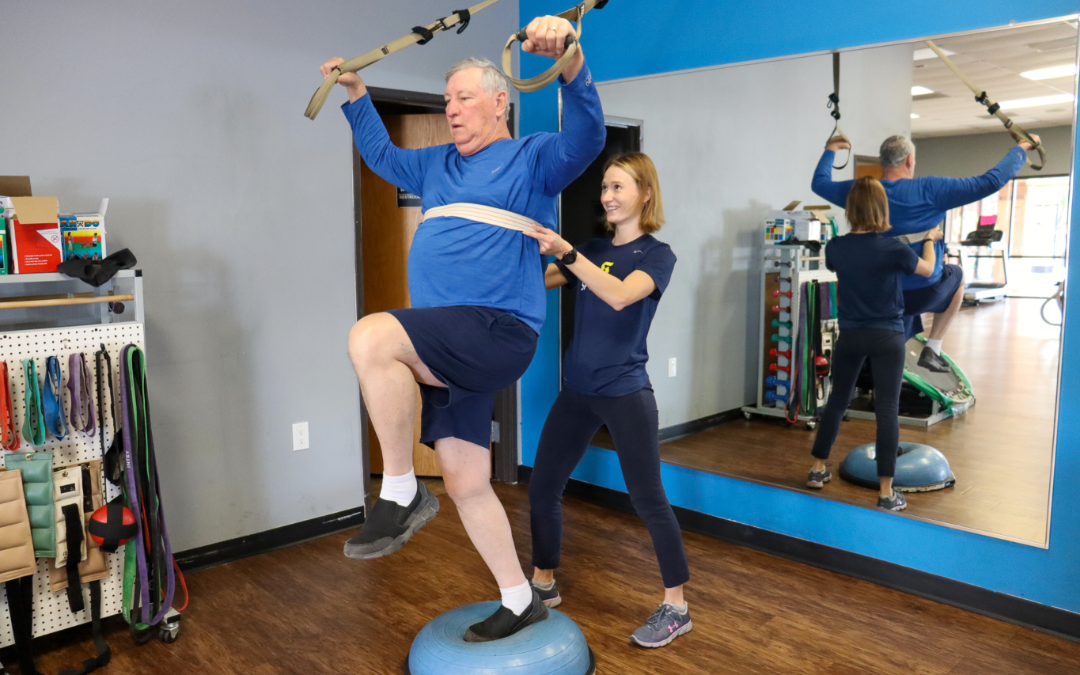By: Julie Helfer, PT, DPT
You are not alone in your Parkinson’s diagnosis. Outside of the community of those who have Parkinson’s Disease, caretakers, loved ones, friends, physicians, and physical therapists are here to help you in this journey.
Over 60,000 people are diagnosed with Parkinson’s Disease each year, and there is research happening constantly to better understand this diagnosis. While the search for cure is underway, physical therapy is a great treatment path to improve functionality and achieve independence. Julie Helfer, PT, DPT, outlined four different physical therapy strategies to help a Parkinson’s patient move and feel their best.
- 1. Navigating Narrow Spaces
- Freezing is a common symptom of Parkinson’s disease. Freezing is when it becomes difficult to initiate or sustain movement and sometimes looks like rapid shuffling. This is especially common when navigating narrow spaces where a person may feel confined, or their balance is compromised.
Physical therapy will help develop confidence when striding across thresholds, making sharp turns, or weaving through a crowd while maintaining speed and movement.
- 2. Posture
- Treating posture is an important component of care for a patient with Parkinson’s. It is common for PD patients to develop a forward posture which in turn moves their center of mass forward and over their feet. This can contribute to balance deficits, especially in falling forward. Forward posture and balance deficits also encourage patients to watch their feet and rely on their visual system for balance.
Improving postural mobility and strength allows patients to stand more upright, decrease balance deficits, and improve environmental awareness and navigation.
- 3. LSVT-BIG Exercises
- LSVT stands for Lee Silverman Voice Treatment. LSVT began in speech rehabilitation for PD patients and was so effective that many of the similar “BIG” principles were applied to physical rehabilitation with great success. LSVT emphasizes making “BIG” movements with increased range and power in the arms, legs, and torso.
These movements will help the patient learn how to overcome the too small and too slow movements that are common with Parkinson’s disease. They are also effective in increasing flexibility and challenging balance.
- 4. High-intensity Exercises
- Research has shown that high-intensity exercise helps increase production of the neurotransmitters that are low in Parkinson’s disease. It is an exciting and fun component of Parkinson’s treatment and can include dance, boxing, weight-lifting, or treadmill training, to name a few examples.
This part of treatment can be customized to individual interests and focus on returning to meaningful activities in a patient’s life.
April is Parkinson’s Disease Awareness Month, and, as we wrap this month up, we want to celebrate those who have been diagnosed with Parkinson’s that we see as patients and will see in the future as patients. You are working so hard towards your movement goals, and we are so proud of you.
Thank you also to our physical and occupational therapists who treat Parkinson’s. Schedule an appointment today with one of our therapists to start your journey towards improved function and independence.

